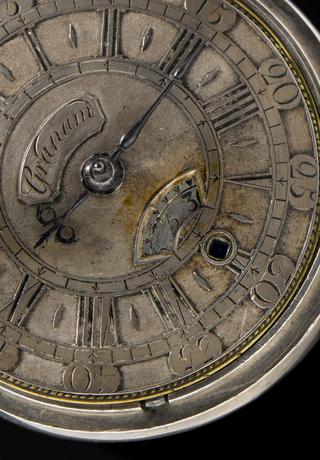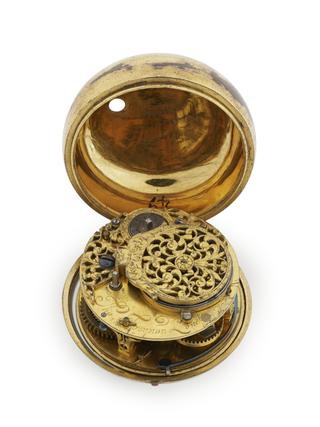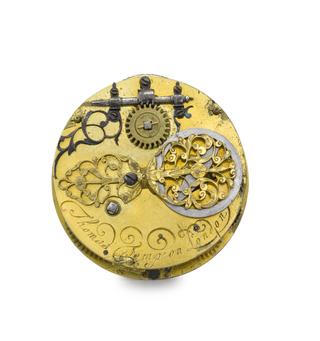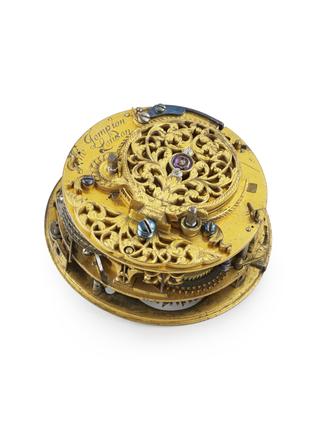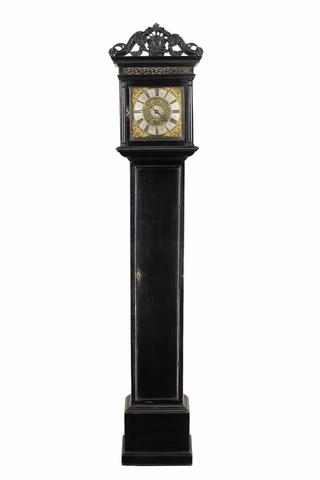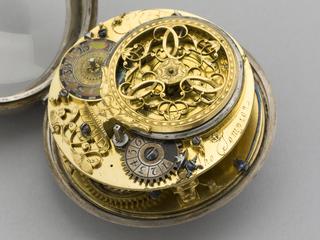
Thomas Tompion 1639 - 1713
- Nationality:
- English
- born in:
- Bedfordshire, England, United Kingdom
Thomas Tompion’s early years are intriguingly still mostly unknown, with little evidence from his formative years available to historians. Born 25 July 1639 in Bedfordshire to a blacksmith, he arrived in London in the Water Lane area in 1671. Water Lane no longer exists but would have been situated where Blackfriars Street in modern day London is. Unusually for a maker during this time, there is no evidence that Tompion was an apprentice, but one of his recent biographers thinks he may have been ‘mentored’ by the clockmakers Edward East and Ahasuerus Fromanteel.
Tompion met the Royal Society’s Curator of Experiments Robert Hooke in 1674, and during this year, he worked on Hooke’s horary quadrant. The quadrant was presented to the Royal Society at a December lecture by Hooke, where the minutes show Hooke acknowledged Tompion by name. The two met regularly that year, evidenced by the repeated mentions of their meetings in Hooke’s meticulous diary. Hooke and Tompion, in collaboration with Sir Jonas Moore, were commissioned to build what was to become known as the ‘King’s Watch’ in 1675, a timekeeping device that it was thought might be a solution to the problem of longitude.
Christian Huygens claimed to have invented such a device, news of which reached Hooke from his mentor Robert Boyle in February 1674/5. A panicked Hooke counter-claimed that he had already designed such a device over fifteen years previously and met with Tompion from that point almost daily to discuss its construction; it was this watch that was being built by the three men for Charles II. The names of Tompion and Hooke were engraved on the watch, with an indication that whilst Tompion was the maker in 1675, Hooke was accredited as the inventor in 1658. The balance spring watch prototype they created was received poorly and did not survive.
The pressures of this challenge led to a well-known dispute between Tompion and Hooke in the run up to Christmas 1675. Although it is not known precisely why the two fell out, an angry Hooke referred to his working partner as a ‘slug’. The King’s commission meant that Tompion’s stock was rising and Hooke likely realised that this meant his monopoly on Tompion’s time and work was in danger. Certainly from 1674-5, Tompion’s name was gaining currency and from 1675 the sign of his shop ‘The Dial’ was hung outside for the first time. When his workshop moved to a larger premises in 1676 to 67 Fleet Street, it retained its sign, but by the 1690s was known as ‘The Dial and Three Crowns’. It has been estimated that during his career, well over one hundred apprentices and collaborators could have been involved in the design, production, finishing and retailing of Tompion’s clocks and watches.
Repeating clocks were invented by Edward Barlow sometime during the late 1670s: these clocks saw the hours chimed at will rather than fixed intervals; it was the design that became Tompion’s hallmark from the 1680s. It was Tompion who was the first watchmaker to inscribe what we know today as ‘serial numbers’ on the reverse of his timepieces. Tompion’s long time collaborator in the 1700s was Edward Banger, whose name is signed with Tompion’s on many watches. It is unknown why they parted company, but it led to clockmaker and future Royal Society Fellow George Graham collaborating with Tompion, and ultimately taking over his business on his death in 1713.
